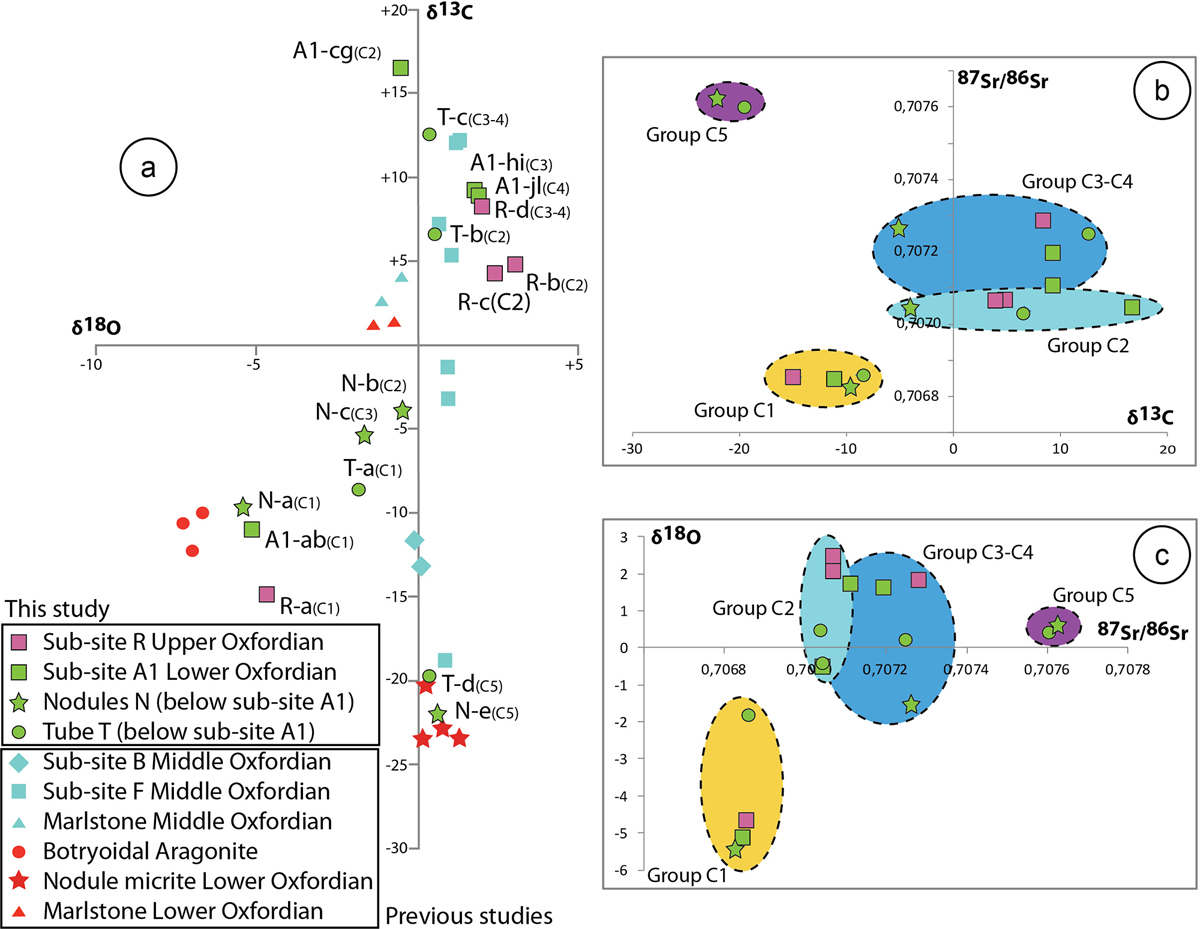Fig. 14

Download original image
(a) Diagram of δ13C versus δ18O including analyzes conducted in previous studies (Peckmann et al., 1999; Louis-Schmid et al., 2007; Tribovillard et al., 2013). The yellowish calcite C1 and botryoidal aragonite can be interpreted as bacterial in origin and negative isotopic values are a marker of the microbial mediation in the building of carbonate lenses. The isotopic values for C2, C3 and C4 are more dispersed with positive δ13C and δ18O values except for two samples that are closer to the C1 signature. The very negative δ13C isotopic values for C5 suggest that the same hydrocarbon-bearing fluid migrated through the tube and nodule and probably through the basal lens of sub-site A1 and all other sub-sites up to sub-site E1, but not higher as no hydrocarbons were identified above (including the sub-site R). (b) and (c) Diagrams of 87Sr/86Sr versus δ18O and δ13C versus 87Sr/86Sr showing three main groups. The group C1 in which the age of formation corresponds to the biostratigraphic age of the host formation (Early Oxfordian for tube T, nodule N and carbonate lenses in the sub-site A1 and Late Oxfordian for the sub-site R). The groups C2 and C3–C4 have very close Sr isotopic signatures. They formed shortly after the brecciation at a relatively shallow burial (<1000 m) with fluids coming from underlying Pliensbachian, Late Toarcian or Bajocian levels in a single migration event possibly dated of Cretaceous. The group C5 has a signature of fluids from Trias, but the migration probably occurred during the main salt diapir rising dated of the Mio-Pliocene.
Les statistiques affichées correspondent au cumul d'une part des vues des résumés de l'article et d'autre part des vues et téléchargements de l'article plein-texte (PDF, Full-HTML, ePub... selon les formats disponibles) sur la platefome Vision4Press.
Les statistiques sont disponibles avec un délai de 48 à 96 heures et sont mises à jour quotidiennement en semaine.
Le chargement des statistiques peut être long.




